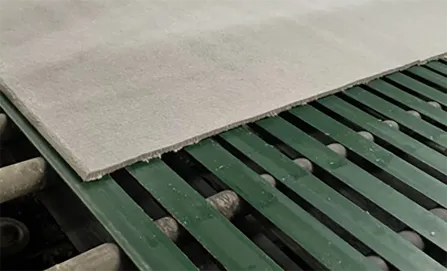- Afrikaans
- Albanian
- Amharic
- Arabic
- Armenian
- Azerbaijani
- Basque
- Belarusian
- Bengali
- Bosnian
- Bulgarian
- Catalan
- Cebuano
- Corsican
- Croatian
- Czech
- Danish
- Dutch
- English
- Esperanto
- Estonian
- French
- German
- Greek
- Hindi
- Indonesian
- irish
- Italian
- Japanese
- Korean
- Lao
- Malay
- Myanmar
- Norwegian
- Norwegian
- Polish
- Portuguese
- Romanian
- Russian
- Serbian
- Spanish
- Swedish
- Thai
- Turkish
- Ukrainian
- Uzbek
- Vietnamese
Aza . 06, 2024 19:03 Back to list
Understanding Laminated Gypsum and Its Applications in Modern Construction Techniques
Laminated Gypsum An Overview
Laminated gypsum, also known as gypsum board or drywall, is a widely used construction material that has revolutionized the building industry. Composed primarily of gypsum plaster, sandwiched between two layers of thick paper or fiberglass mat, laminated gypsum serves as an efficient and effective means of creating interior walls and ceilings. This article explores its composition, benefits, applications, and the future of laminated gypsum in construction.
Composition of Laminated Gypsum
The primary component of laminated gypsum is gypsum, a naturally occurring mineral composed of calcium sulfate dihydrate. To create laminated gypsum, the raw gypsum is heated and dehydrated to produce calcium sulfate hemihydrate, commonly referred to as calcined gypsum or plaster of Paris. This material is then mixed with additives to enhance its properties, such as fire resistance and mold prevention. The resulting gypsum plaster is spread between two sheets of paper, which provide strength and stability, resulting in a product that is lightweight and easy to handle.
Benefits of Laminated Gypsum
1. Ease of Installation One of the most significant advantages of laminated gypsum is its ease of installation. Panels can be quickly cut to size, enabling efficient handling and reducing labor costs. The lightweight nature of gypsum board allows for straightforward transportation and setup.
2. Fire Resistant Properties Laminated gypsum is inherently fire-resistant. When exposed to flames, the water content in gypsum is released as steam, helping to delay the spread of fire. This property makes it a preferred choice for areas that require enhanced fire safety.
3. Soundproofing Qualities The density and structure of laminated gypsum effectively dampen sound, making it a popular choice for residential and commercial properties that require soundproofing measures. It helps to reduce noise transmission between rooms, contributing to a quieter indoor environment.
4. Versatile Design Options Laminated gypsum can be used in various forms, including plaster, finishes, and panelized systems. It can be easily painted, coated, or textured to meet aesthetic requirements. This versatility allows architects and designers to create unique spaces that align with their vision.
laminated gypsum

5. Sustainability Many manufacturers produce laminated gypsum with recycled materials and sustainable practices. The resource-efficient nature of gypsum production, coupled with its potential for recycling at the end of its life cycle, makes it an environmentally friendly choice.
Applications of Laminated Gypsum
Laminated gypsum is used in multiple applications across different sectors. In residential construction, it is commonly employed for interior walls and ceilings, providing a smooth surface for paint or wallpaper. In commercial settings, laminated gypsum is favored for office partitions and acoustic ceilings, allowing for the creation of functional and attractive spaces.
Furthermore, specialized laminated gypsum products are designed for specific environments. For instance, moisture-resistant gypsum board is ideal for bathrooms and kitchens, where humidity levels can be high. Fire-rated panels are used in corridors and stairwells in multi-story buildings, enhancing safety standards.
The Future of Laminated Gypsum
As the construction industry continues to prioritize sustainability and innovation, the future of laminated gypsum looks promising. With ongoing advancements in technology, manufacturers are developing improved formulations that enhance performance characteristics, such as increased moisture resistance and greater impact resistance.
Moreover, the growing emphasis on green building practices is likely to boost the demand for laminated gypsum products. As architects and builders seek materials that minimize environmental impact and promote energy efficiency, laminated gypsum stands out as an appealing option.
In conclusion, laminated gypsum is a versatile and beneficial material that plays a crucial role in modern construction. Its unique properties, ranging from fire resistance to soundproofing, combined with ease of installation and sustainability, make it a preferred choice for builders, architects, and designers. With continuous advancements and growing sustainability efforts, laminated gypsum is set to remain a cornerstone of interior construction for years to come.
-
Transform Interiors with PVC Gypsum Ceiling: A Stylish, Durable, and Moisture-Resistant SolutionNewsMay.19,2025
-
The Smart Interior Upgrade: Discover the Durability and Versatility of Gypsum Ceiling Access Panel SolutionsNewsMay.19,2025
-
The Smart Choice for Interior Design: Discover the Value of PVC Gypsum Ceiling SolutionsNewsMay.19,2025
-
Mineral Fiber Ceiling Tiles: The Smart Blend of Performance and AestheticsNewsMay.19,2025
-
Mineral Fiber Ceiling Tiles: The Superior Choice Over Gypsum for Sound and Fire SafetyNewsMay.19,2025
-
Mineral Fiber Ceiling Tiles: Eco-Friendly Strength and Style for Every CeilingNewsMay.19,2025







